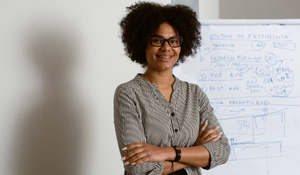Educators Share their 2019 Goals for Special Education
By Michelle Zavaleta and Jennifer Keiser
One of the hardest aspects of being a special education teacher is the uncertainty. We sometimes don’t know exactly what our students need from us, or the best ways for us to accommodate those needs. Perhaps we don’t know that our students can’t hear us during a lesson, or we don’t know that they’re still struggling to understand a previous lesson. While we do our best to address these challenges before they come up, our job is to leave no stone unturned.
At Tulare City School District in California, we’ve set three goals this year that are focused on improving both students’ and teachers’ mindsets and performance. While these goals are unique to our district, we believe that every educational community can benefit from putting time and effort into these areas.
1.) Making Parent Connections: Parents are the people who spend the most time with our students, so schools should be open to their input and feedback. A big part of every educator’s job is to communicate with parents and ensure they’re up to speed on their child’s performance. When parents are involved, there are even more opportunities for growth. We try to provide parents with specific examples of student success and refrain from generalizations like “never” or “always.”
2.) Recognizing the Importance of Data: To us, data isn’t just about numbers. We want to know the “why” behind each data point. We’re currently working on improving and further supporting a positive mindset within our community. This involves being very explicit about the rules and expectations for students and adults, and implementing positive rewards systems so that students know what is expected and the reward for meeting those expectations. We have monthly meetings where staff discuss data and brainstorm solutions for areas that may be of concern. For example, if a lot of behavior issues are occurring during lunch or recess, maybe we need to look at setting up structured play activities instead of having the students be more independent.
3.) Trying New Tools and Techniques: The most exciting aspect of education is that it’s constantly evolving. Every child learns differently and every teacher has their own style, so using one method for everyone is simply not going to work. We’re working to incorporate tools that truly involve both teacher and student while supporting growth and engagement. For example, we started using a classroom speaker and microphone, and now our students with hearing impairments can more easily hear their teacher’s voice. We’ve heard students say it feels like the person is talking right next to them in their ear, and that they hear less of the background noise.
Most importantly, as educators, we need to connect lessons to activities that prepare students for what’s ahead. Allowing children, especially students with disabilities, to take control of their own learning helps them understand the importance of self-advocacy. Of course, some students will need more scaffolding than others, but the goal remains the same. The best thing we can do for every student is to teach them how to teach themselves.
Jennifer Keiser is a speech pathologist at Tulare City School District.
